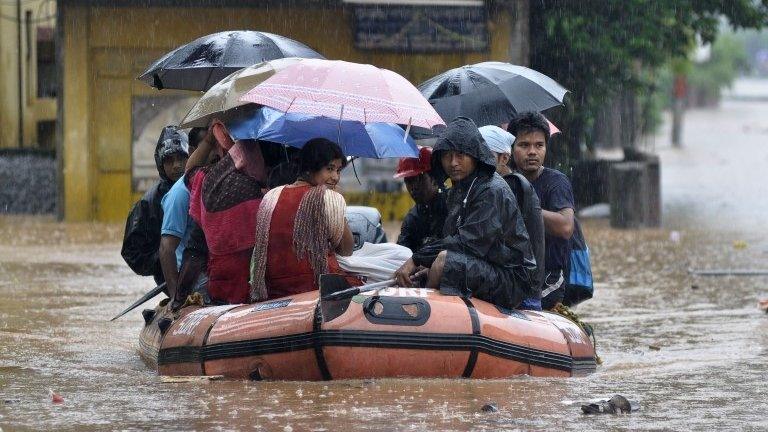Forgotten floods: Why India can't afford to ignore Assam
- Published
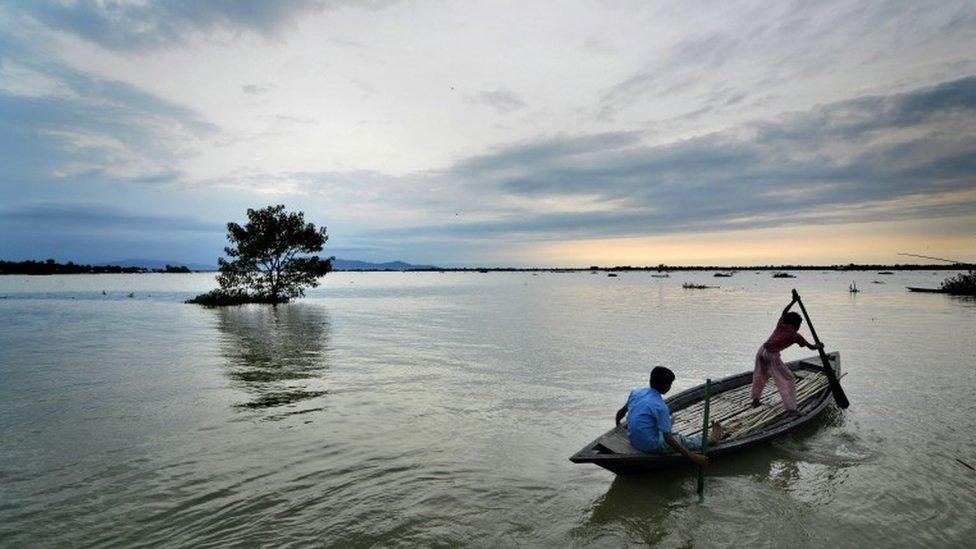
Authorities say more than 100,000 people have been hit in the first wave of floods
For weeks on end, a sensational murder mystery involving a prominent media industrialist has hogged the media limelight in India.
During the same time, there has been little coverage in the newspapers and news channels about yet another deadly bout of flooding in the north-eastern state of Assam.
More than a million people have been affected and 60 have died in flood-related incidents so far. Officials say more than 1,600 villages have been inundated. Some 120,000 people have left their homes and taken shelter in more than 300 relief camps.
All the major rivers in the state - the Brahmaputra, Jia Bharali, Dhansiri, Puthimari, Beki, Katakhal and the Kushiyara - were flowing above the danger mark for more than three weeks.
The local media have run single word headlines like proloy (cataclymic disaster) to capture the fury unleashed by the floods. But the national media has remained unmoved.
National calamity?
Writing in the media site The Hoot, external, analyst Kakoli Thakur says while the murder mystery in Mumbai "involving a woman from Assam was hogging the limelight but the state itself, where thousands of people were hit by the worst spate of floods in decades, was reduced to fillers in the newspapers and small news capsules on TV channels".
Ms Thakur argued that if a similar situation happened in any other state, the government and the media would have lost no time in declaring it a national calamity.
Assam is possibly India's most flood-prone state: since 1950, the state has seen at least 12 major floods.
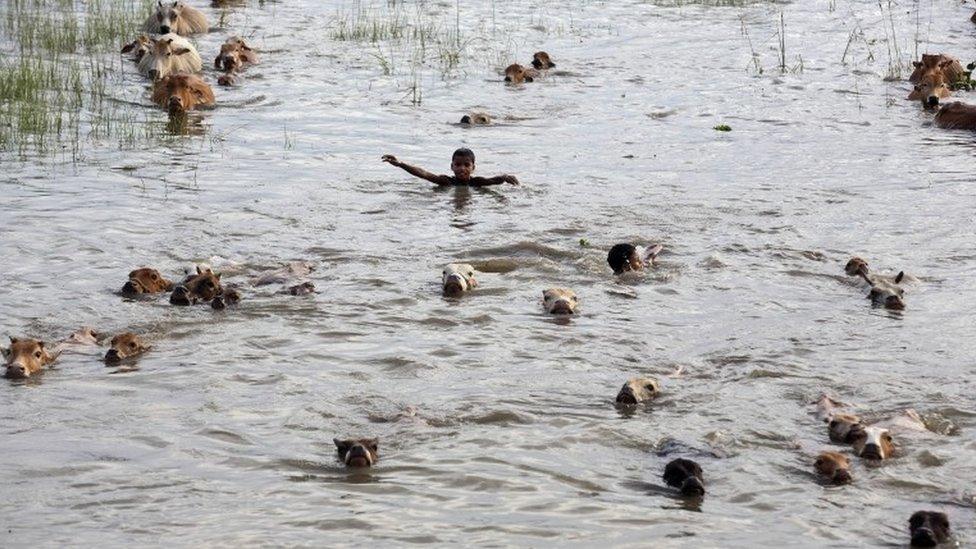
Floods are an annual occurrence in Assam during the monsoon season
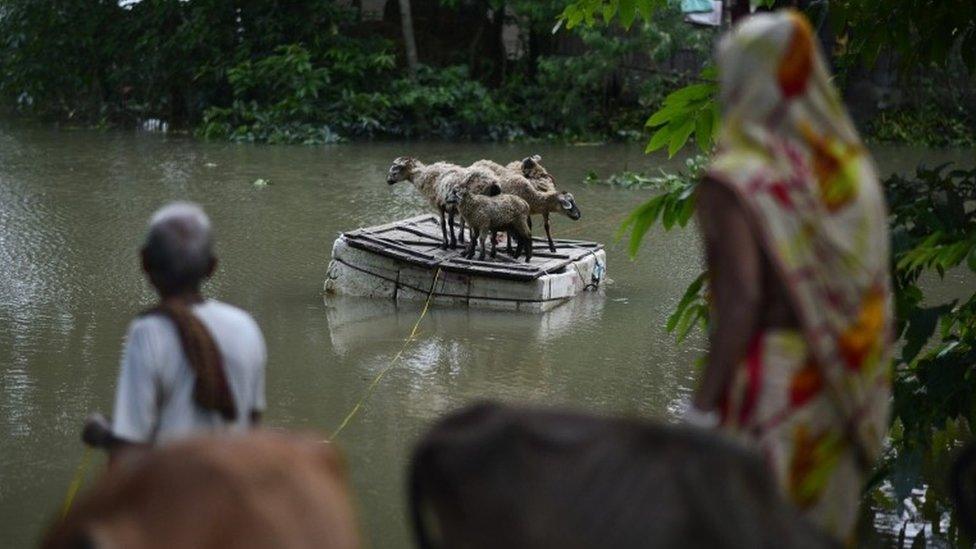
More than 1,600 villages have been inundated
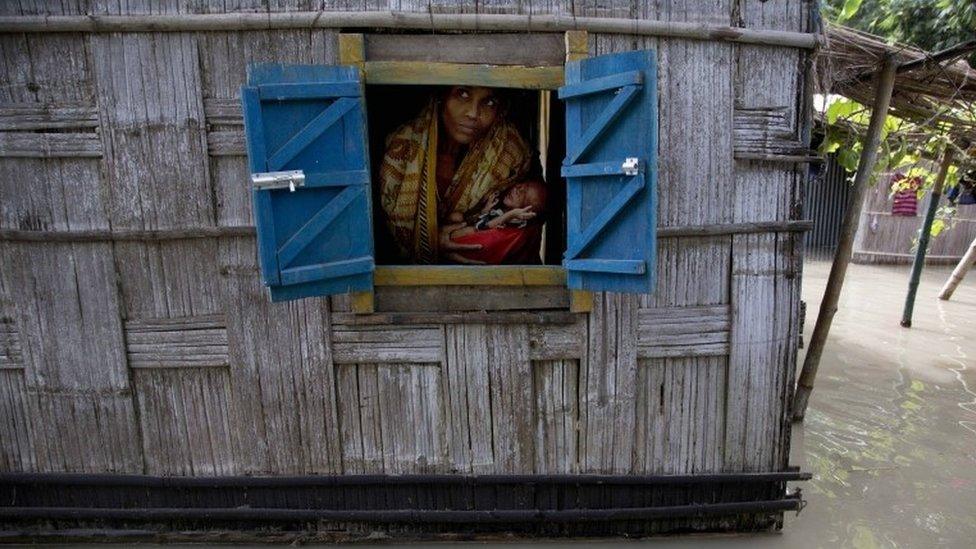
There has been little coverage in newspapers and news channels of the floods
So why does the state which is regularly hit by floods, not get national media attention?
"What is seen as usual rarely gets importance as news in Indian media. And floods in Assam seem to be the usual thing," says Ashis Biswas, a veteran journalist who has worked in Assam.
Mr Biswas recalls senior editors telling him during his days in Assam, "Please, no flood stories again".
Flood prone
Assam has always been prone to floods, but the 1950 Great Earthquake, external in the region led to massive changes in its topography and made things worse.
The state's Brahmaputra valley has, thereafter, been seeing increased devastation due to floods , says environment expert Partha J Das.
Mr Das says that more than 40% of Assam's land is susceptible to damage by flood waters and the total flood-prone area in the Brahmaputra valley alone accounts for 9.6% of India's total flood prone area.
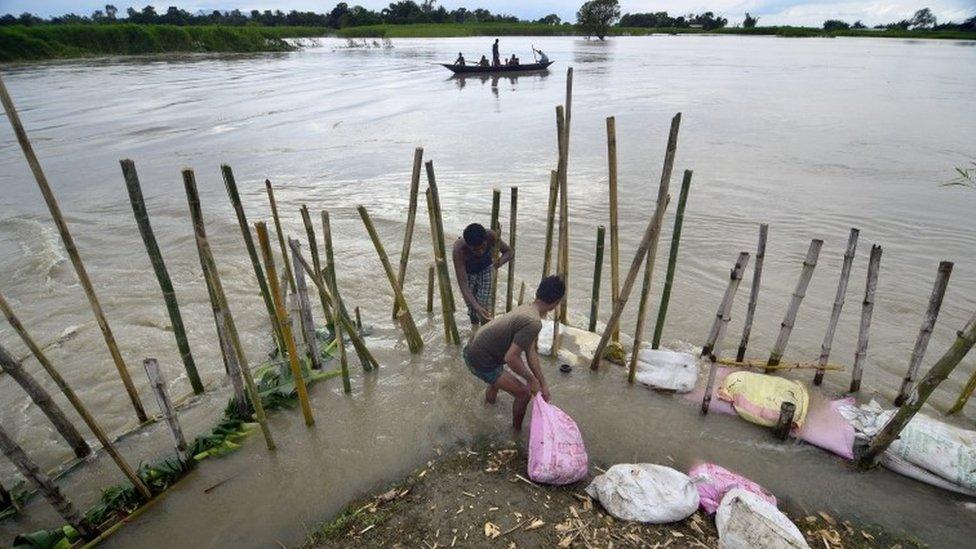
Many embankments constructed to control floods are now in a bad shape
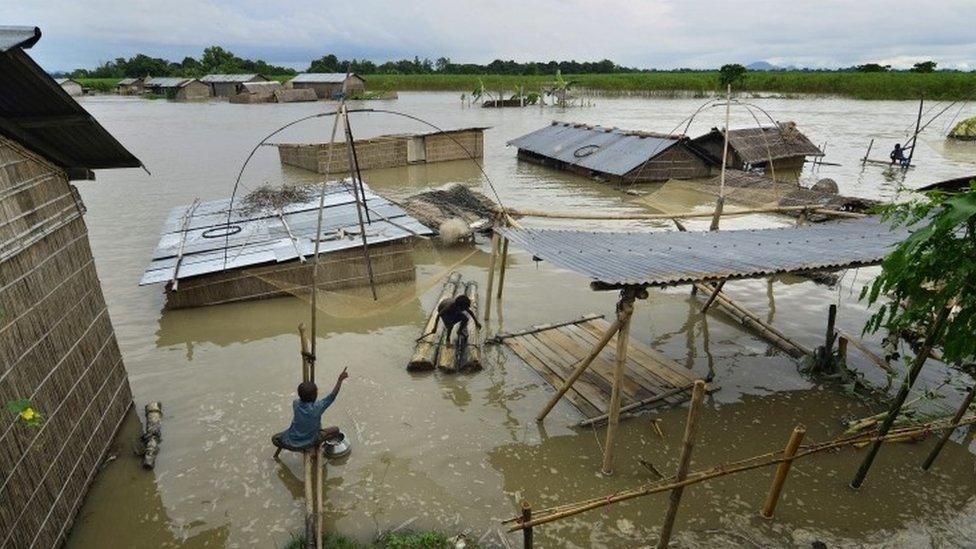
The Brahmaputra river has become more unstable after the 1950 earthquake
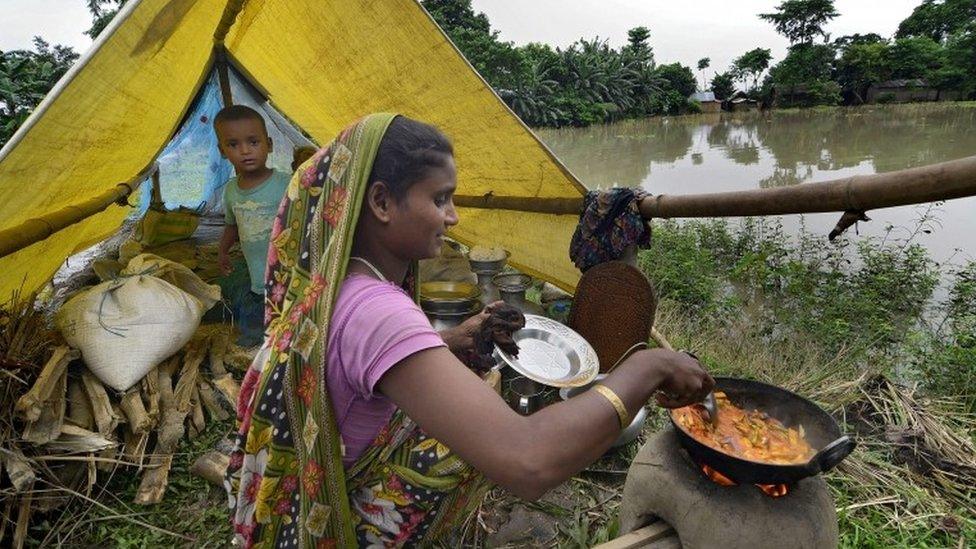
Some 120,000 people have left their homes and taken shelter in more than 300 relief camps
River expert Dulal Goswami says the Brahmaputra river has become more unstable after the 1950 earthquake and the shifting of river channels and erosion have become more severe and frequent.
In a 2000 study helmed by Dr Goswami found that regular heavy monsoon rains, high erosion, silting of river channels, massive deforestation, intense pressure land due to high population growth in the floodplains have led to frequent floods in the state. Flood control measures have been shoddy, the report adds.
'Vulnerable'
The government has built some 450 embankments on rivers to check flooding, but nearly half of these embankments themselves are now considered "extremely vulnerable".
In between the periodic floods, Assam has also been affected by drought. Nearly half its area has been affected by them.
"Climate change is causing huge impact in Assam ," says Amarjyoti Bora of the Assam-based Centre for Environment, Society and Policy Research, which has done a detailed study on climate change in Assam.
"These changes will seriously impact on livelihoods."
"The floods of 2012 and 2015 should serve as a major wake up call for those who run the state and the country," says Mr Bora.
"But that is perhaps not happening. Political parties are busy preparing for the state elections next year."
- Published12 January 2015
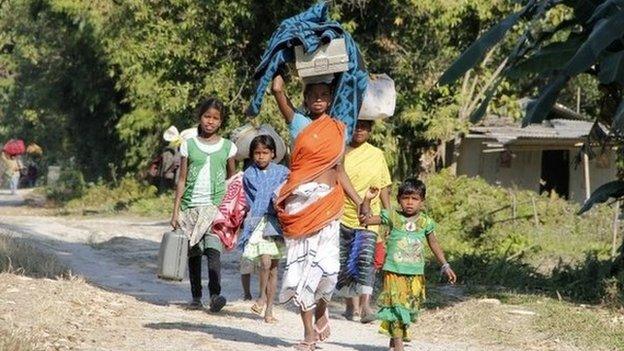
- Published23 September 2014
